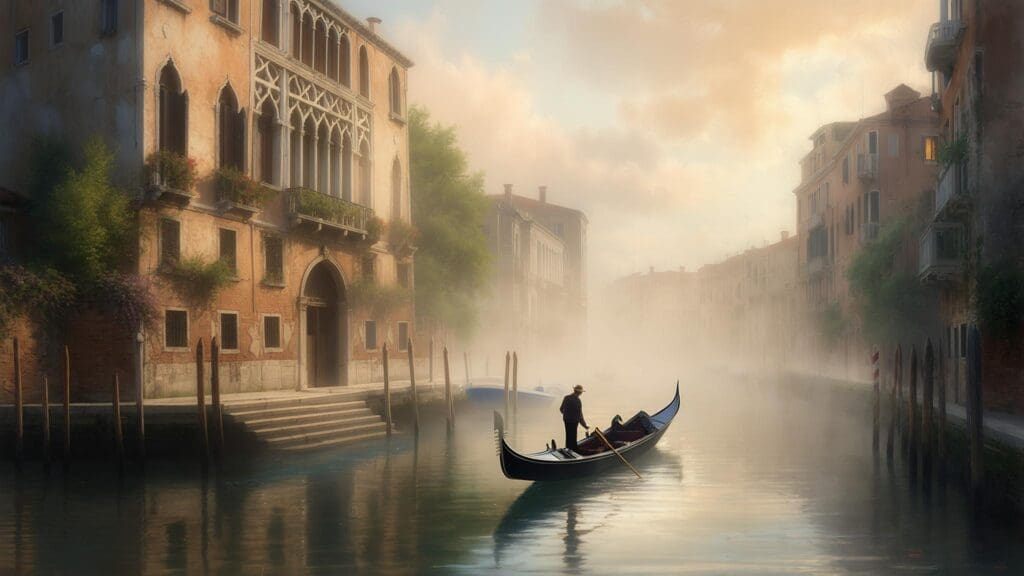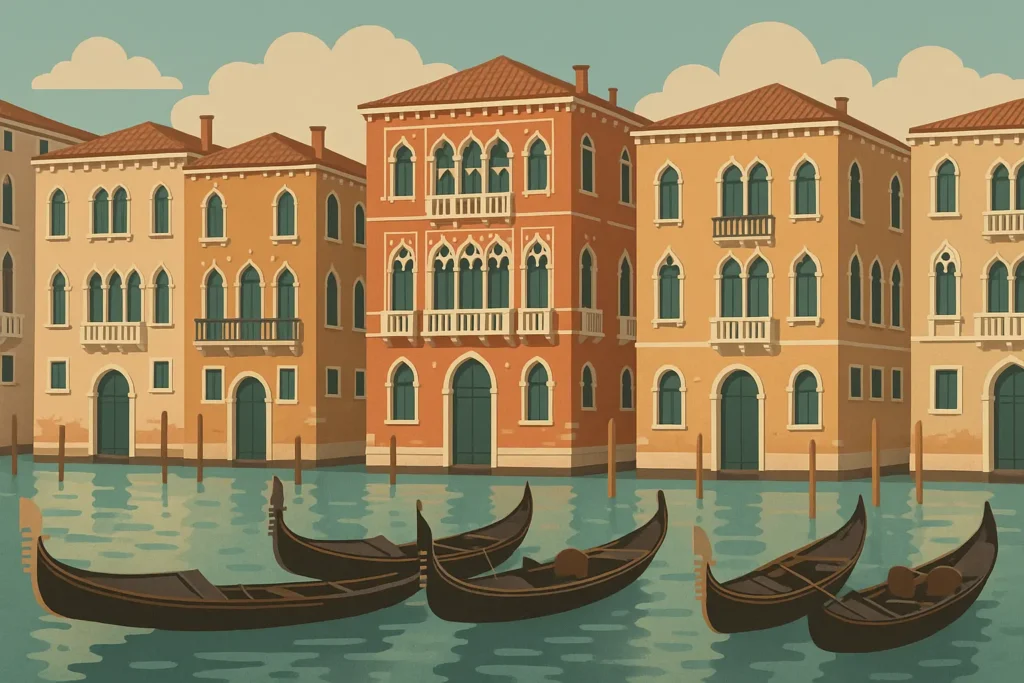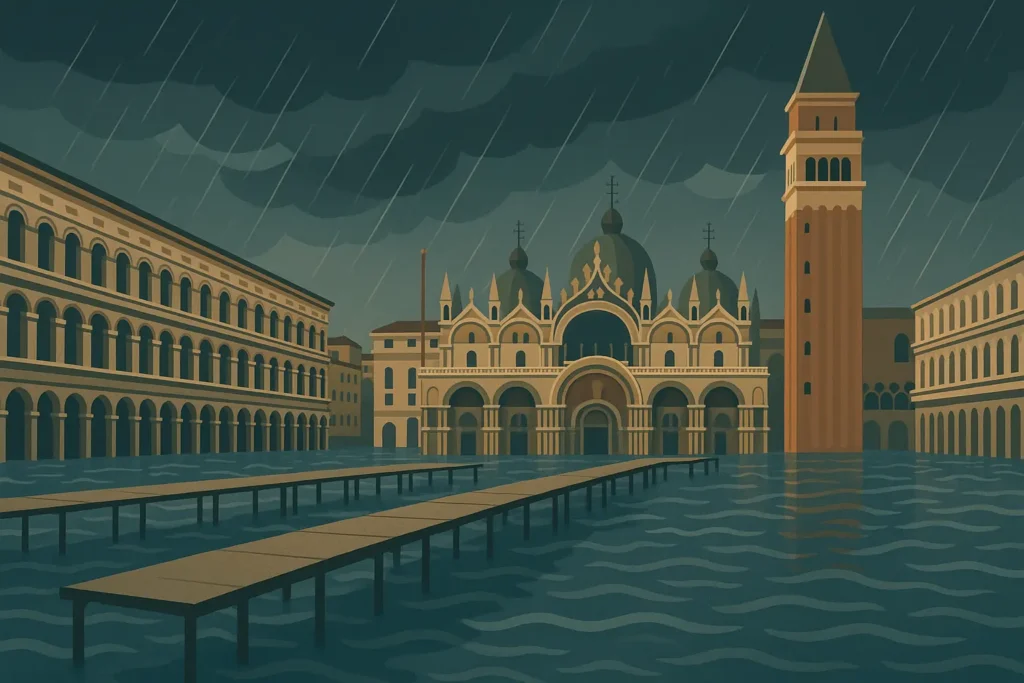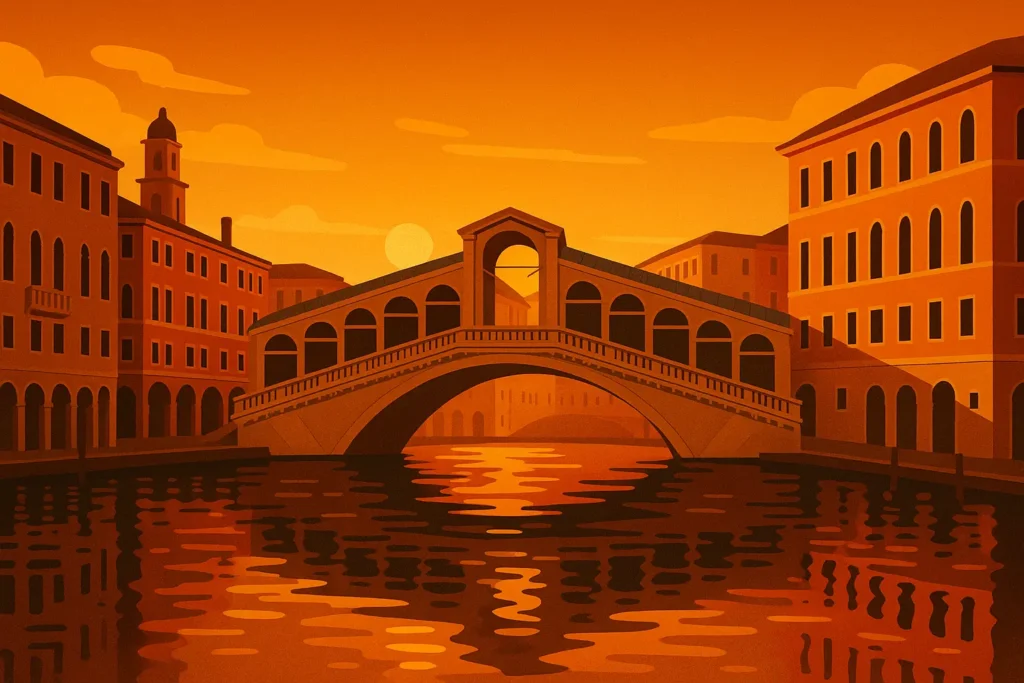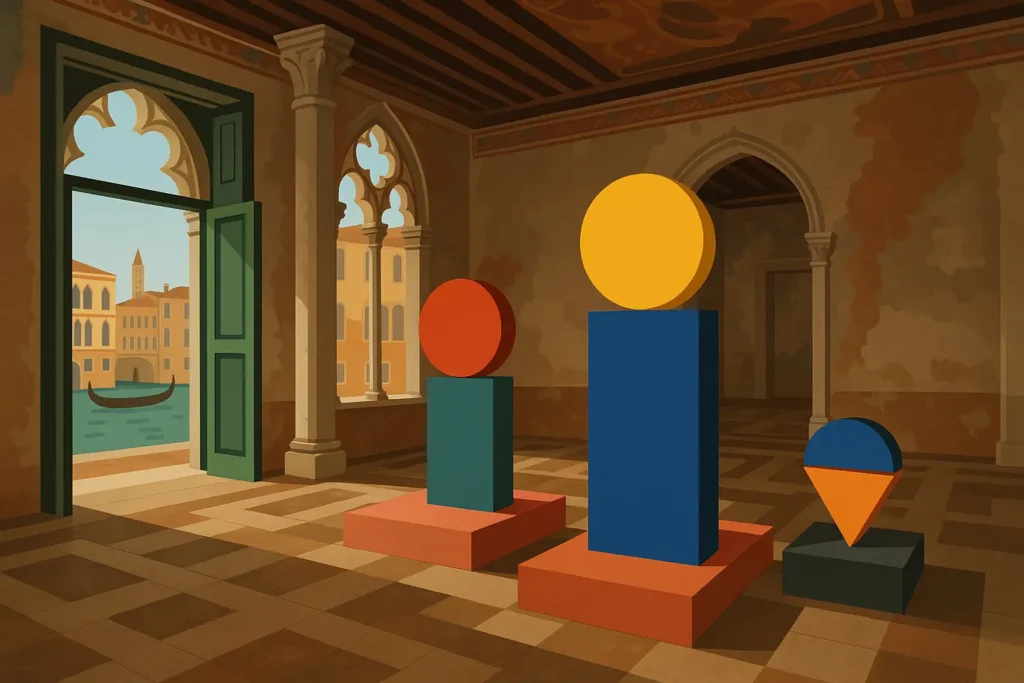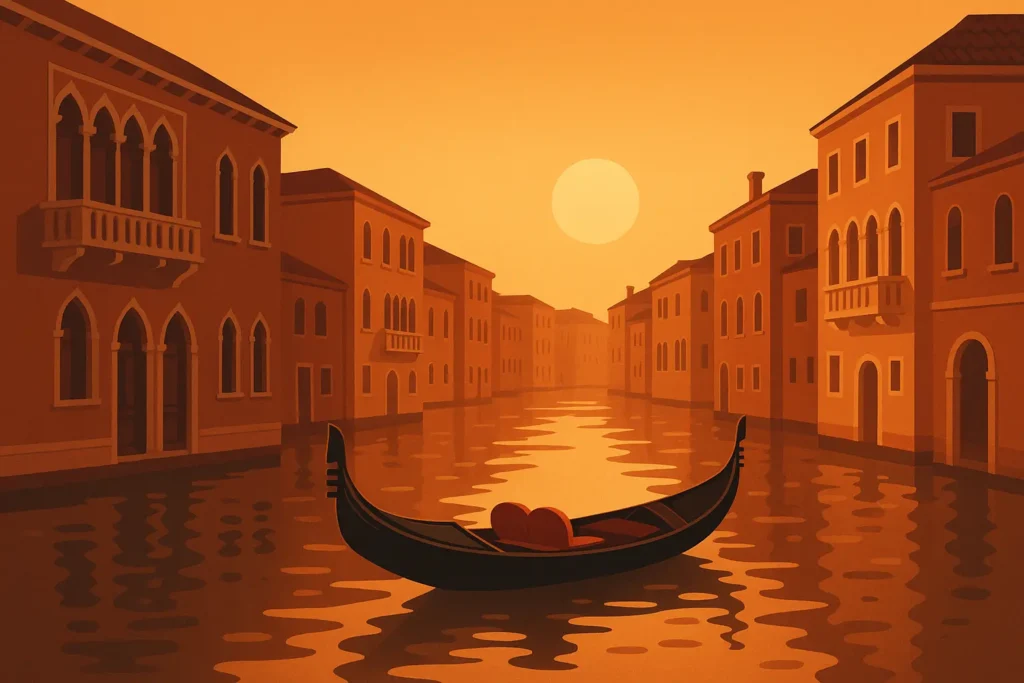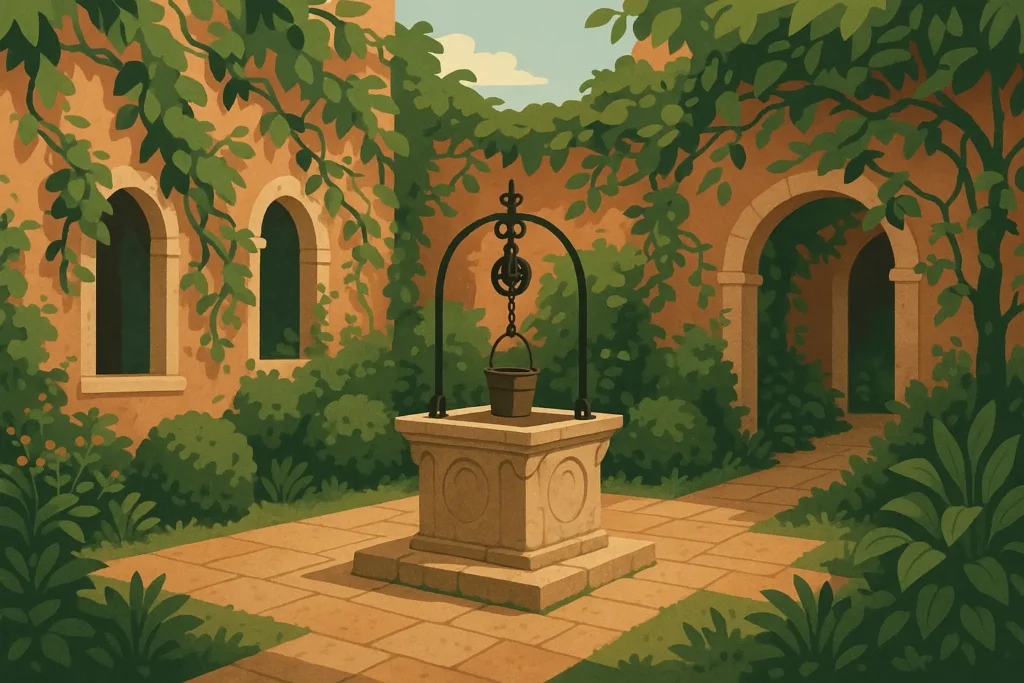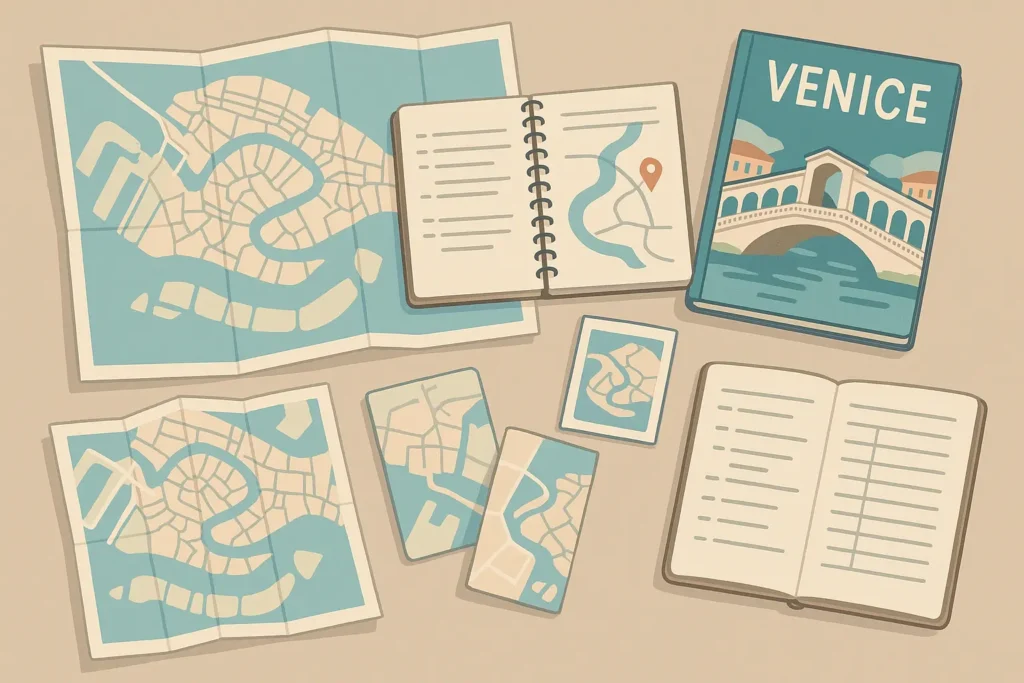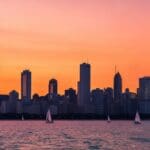Venice attracts over 25 million visitors annually, making it one of the world’s most visited destinations. I remember standing in St. Mark’s Square for the first time, completely overwhelmed by the sheer number of tourists and wondering how I’d ever experience the “real” Venice. That moment taught me something crucial: having the right venice itinerary isn’t just helpful—it’s essential for cutting through the chaos and discovering what makes this floating city actually worth the hype.
Look, I’ve made all the mistakes so you don’t have to. Whether you’re cramming everything into one crazy day or taking your sweet time over a week, I’ve put together 25 different ways to do Venice that actually work. From “I’m broke but determined” routes to “money is no object” experiences, these venice travel guide approaches will help you navigate those confusing canals without losing your mind.
Plan your ideal Venice escape with our Vacation Planner
Quick Resources:
-
Plan your custom trip with our Vacation Planner
-
Check out All Wedding Tools
TL;DR
- Venice can be done in 1-6 days, but your expectations need to match your timeline
- Budget reality check: €50-70/day if you’re scrappy, €300+/day if you want the fancy stuff
- Spring and fall are your best bet—summer is a sweaty nightmare, winter is moody but authentic
- You’re going to walk. A lot. On uneven stones. Bring good shoes or suffer
- Pick what you actually care about instead of trying to see everything
- Solo, couples, families, and friend groups need totally different approaches
- There’s a whole other Venice beyond the tourist stuff if you know where to look
- Plan the big stuff, but leave room for getting pleasantly lost
What Actually Makes a Venice Itinerary Work (Spoiler: It’s Not What You Think)
How Much Time Do You Really Need?
How many days in venice should you spend? Honestly, it depends on whether you’re the “check the boxes and move on” type or the “sit in cafes and people-watch” type. Both are totally valid, but they need completely different venice itinerary approaches.
One day gives you bragging rights and some decent Instagram shots. Three days lets you actually breathe and discover that Venice has neighborhoods beyond the tourist circus. Six days? That’s when you stop feeling like a tourist and start understanding why people either love this place or want to escape it immediately.
| Duration | Reality Check | What You’ll Actually See | How You’ll Feel |
|---|---|---|---|
| 1 Day | Rushed but doable | The greatest hits only | Accomplished but exhausted |
| 2-3 Days | Sweet spot for most people | Major stuff plus some exploring | Satisfied without burnout |
| 4-5 Days | For culture nerds | Deep dives and hidden gems | Like you actually “get” Venice |
| 6+ Days | Living the dream | Everything plus day trips | Spoiled and possibly broke |
Match your travel style to the perfect plan with our Vacation Planner
Here’s the thing – there’s no wrong answer. I’ve seen people fall in love with Venice in four hours, and I’ve seen others get bored after three days. Know yourself and plan accordingly.
Seasonal Reality Check
Venice changes completely with the seasons, and I’m not talking about pretty postcards. We’re talking about whether you can actually walk through St. Mark’s Square or if you need those weird elevated platforms because of flooding.
Winter brings acqua alta (high water) that can literally flood the main square. It sounds romantic until you’re dragging your suitcase through ankle-deep water. But winter also means you can actually move around without fighting crowds, and locals reclaim their city.
Summer is gorgeous and absolutely miserable at the same time. Perfect weather, suffocating crowds, and prices that’ll make you question your life choices. Pro tip: start your days at 6 AM when the city belongs to delivery boats and early-rising photographers who know what’s up.
Spring and fall are the Goldilocks seasons—not too crowded, not too empty, and that amazing light that makes every canal look like a Renaissance painting.
The Money Talk Nobody Wants to Have
Venice’s reputation for being expensive isn’t entirely fair, but it’s not entirely wrong either. The difference is knowing where your money goes and making smart choices.
Stay in Mestre and save 50% on hotels while adding 20 minutes to every trip. Choose a canal-view room in San Marco and pay through the nose for the privilege of stepping directly into tourist central. Both are valid choices – just know what you’re getting into.
Food costs are all over the map. A spritz at Harry’s Bar costs €20; the same drink at a neighborhood bar costs €3. Both are “authentic Venice experiences”—just different price points for different priorities.
My friend Sarah went full budget mode and actually pulled it off. She stayed in this sketchy but clean hostel in Mestre, packed peanut butter sandwiches like she was going on a middle school field trip, and only splurged on one gondola ride because, let’s face it, you can’t go to Venice and NOT do the gondola thing. Total damage: €280 for four days. She came back with amazing photos and only complained about her feet for like two weeks.
The real budget killer? Impulse decisions. That spontaneous gondola ride costs €80 for 30 minutes of potentially awkward silence. The same money could fund three days of excellent meals at local spots.
Physical Reality Check (Because Nobody Talks About This)
Venice doesn’t do accessibility well. This isn’t meant to discourage anyone, but you need to know what you’re getting into when planning your venice itinerary.
Every journey involves bridges—lots of them. Each bridge means stairs up and stairs down, often steep and always stone. Your knees will feel every step by day two. Those cute narrow bridges? Nightmare with a rolling suitcase. Pack light or suffer.
Travel smarter with our free Vacation Planner tool
Wheeled luggage becomes your enemy on cobblestones. Getting lost isn’t charming when you’re dragging a suitcase and your phone is dead.
The good news? Water taxis can bypass much of the walking, and many major attractions are accessible. Just build rest stops into your plans and choose accommodation that doesn’t require a daily marathon.
Pick Your Obsession and Stick With It
Venice caters to every interest, but trying to experience everything guarantees you’ll enjoy nothing fully. The city rewards focus over trying to check every box.
Art nerds could spend a week just in the Doge’s Palace studying Byzantine mosaics and Renaissance masterpieces. Food lovers might ignore every museum while perfecting their bar-hopping technique through the cicchetti scene.
Architecture buffs find centuries of building styles layered throughout the city. Photography enthusiasts discover that the same canal looks completely different at sunrise versus sunset.
The mistake most visitors make? Trying to be interested in everything. Pick what actually excites you and dive deep. You’ll leave with real knowledge instead of superficial Instagram shots.
Customize your itinerary with our Vacation Planner
Group Dynamics (Or How Not to Kill Your Travel Buddies)
Your travel companions shape your venice itinerary more than any guidebook ever will. What works for solo travelers fails miserably for families, and couple-focused plans bore friend groups to tears.
I went with three friends once and we almost killed each other by day two because Sarah wanted to see every museum, Jake just wanted to drink wine, and Lisa needed a bathroom break every 20 minutes. Know your travel buddies before you go.
Solo travelers get ultimate flexibility—spending three hours in a single museum or changing plans because the weather’s perfect without negotiating with anyone. You can follow rabbit holes that would frustrate companions.
Couples need different pacing and different experiences. That sunrise photography session might be magical for two but torture for a group of six friends who’d rather sleep in and start with brunch.
Families with kids require completely different logistics—shorter distances, frequent snack breaks, and activities that don’t bore eight-year-olds. The Doge’s Palace torture chamber exhibits fascinate teenagers but traumatize younger kids.
Duration-Based Adventures (1-6 Days of Real Talk)
1. Express Venice: 1-Day Survival Guide
One day in Venice sounds impossible until you realize millions of cruise passengers do exactly this every year. The secret isn’t seeing everything—it’s seeing the right things without losing your mind.
Start at 8 AM in St. Mark’s Square before the crowds arrive. The early morning light is incredible, and you’ll actually hear your footsteps echo across the empty square. Skip-the-line tickets for St. Mark’s Basilica are non-negotiable; waiting in line wastes precious hours you don’t have.
The Doge’s Palace deserves two hours minimum. Those Instagram-famous rooms and the Bridge of Sighs need time to appreciate properly. Rush through and you’ll miss why this place is actually extraordinary.
Your afternoon Grand Canal vaporetto ride isn’t just transportation—it’s a moving tour of Venice’s greatest palaces. Take Line 1 for the full route and stay on deck despite the crowds pushing to get inside.
End at Rialto Bridge for sunset. Yes, it’s touristy. Yes, it’s crowded. But that golden light hitting the Grand Canal creates the Venice moment you came for.
2. Classic Venice Weekend: 2-Day Reality Check
Two days transforms Venice from a frantic checklist into an actual experience. You’ll have time to sit in cafes, get pleasantly lost, and discover that Venice’s magic happens between the major attractions.
Day one covers San Marco district without the panic. Start with the basilica and Doge’s Palace, but add time for the Campanile elevator ride. Those panoramic views help you understand Venice’s geography instead of just wandering around confused.
Lunch becomes an experience rather than fuel. Find a canal-side spot away from St. Mark’s Square where locals actually eat. Watch the boat traffic while having your first proper Venetian meal instead of grabbing a sad sandwich.
Day two ventures into neighborhoods that feel completely different from tourist central. Dorsoduro and Castello show you where people actually live—laundry hanging between buildings, kids playing in small squares, elderly locals gossiping on bridge steps.
The Peggy Guggenheim Collection provides world-class art without the overwhelming massive museum experience. You can actually absorb the masterpieces instead of speed-walking past them.
3. Three Days in Venice: The Sweet Spot
Three days in venice itinerary hits the perfect balance. You’ll cover everything important while having time for those random discoveries that make travel actually memorable.
Day one establishes your Venice foundation with San Marco highlights and Grand Canal orientation. But you’ll also have time for that impromptu spritz when you discover a perfect canal-side bar that’s not in any guidebook.
Day two’s island hopping adventure shows you Venice’s broader context. Murano’s glass-blowing traditions and Burano’s colorful houses aren’t just photo opportunities—they’re glimpses into centuries-old crafts that built Venice’s wealth. Plus the boat rides give your feet a break.
Day three explores the Venice tourists never see. Cannaregio and Castello neighborhoods show where Venetians actually live. You’ll find local markets, neighborhood churches, and that perfect restaurant where you’re the only obvious tourist.
This pacing allows for weather flexibility. Rain on day two? Swap the islands for museums. Gorgeous sunset on day three? Extend your evening stroll and worry about tomorrow’s schedule later.
4. Extended Venice: 4-Day Cultural Deep Dive
Four days unlocks Venice’s cultural treasures that rushed visitors never discover. You’ll have time for the incredible museums, art collections, and cultural experiences that require patience and attention.
Ca’ Pesaro and Ca’ Rezzonico palaces showcase how Venetian aristocrats lived across different centuries. These aren’t quick photo stops—they’re immersive experiences that take hours to appreciate fully. You’ll understand why these families commissioned such incredible art.
Cooking classes become possible with extended time. Learning to make fresh pasta or risotto from Venetian chefs provides cultural insight that no museum can match. Plus you’ll understand why certain ingredients matter and how geography shaped local cuisine.
Artisan workshops reveal Venice’s living traditions. Watch master craftsmen create Murano glass or traditional masks. These aren’t tourist shows—they’re glimpses into skills passed down through generations that you can’t see anywhere else.
Extended time also means flexibility for special exhibitions, seasonal events, or just following your interests deeper. Discover a fascinating church? Spend an extra hour studying its art. Find an intriguing neighborhood? Explore every alley without schedule pressure.
5. Venice Immersion: 5-Day Complete Experience
Five days transforms you from tourist to temporary resident. You’ll develop favorite cafes, recognize local faces, and navigate without maps—the hallmarks of actually getting to know a place.
Plan your immersive Venice trip using our Vacation Planner
Multiple island visits become feasible without exhaustion. Beyond tourist favorites Murano and Burano, explore Torcello’s ancient history or San Giorgio Maggiore’s panoramic views. Each island has distinct character and way fewer crowds.
Seasonal events and festivals fit naturally into extended stays. Venice’s calendar includes neighborhood celebrations, art exhibitions, and cultural events that rushed visitors miss entirely. These are often the most memorable experiences.
Workshop experiences can deepen beyond single sessions. Take multiple cooking classes to master different dishes, or spend several days with glass artisans learning complex techniques that actually take time to understand.
Local rhythms become familiar. You’ll know when markets open, which restaurants locals frequent, and how to time activities for optimal experiences. This familiarity creates travel memories that last decades.
6. Venice Mastery: 6-Day Expert Level
Six days elevates Venice from destination to expertise. You’ll leave understanding the city’s complexities, contradictions, and contemporary challenges alongside its historical magnificence.
Mainland Veneto day trips become attractive options. Padua’s Sc
Mainland Veneto day trips become attractive options. Padua’s Scrovegni Chapel frescoes or Vicenza’s Palladian architecture provide context for Venice’s artistic development. These excursions break up intense city exploration while expanding your understanding.
Exclusive experiences become worthwhile investments when you have time to appreciate them fully. Private palace tours, after-hours museum access, or meetings with local artisans justify their costs because you’re not rushing to the next thing.
Weather contingencies don’t derail plans. Rain for two days? No problem—you have backup indoor activities and flexible scheduling. Perfect weather streak? Extend outdoor exploration without missing planned experiences.
By day six, you’ll recognize Venice’s seasonal rhythms, understand its tourism challenges, and appreciate its residents’ daily realities. This depth transforms casual visitors into Venice advocates who return repeatedly.
Budget-Smart Venice (Because Venice is Expensive AF)
7. Backpacker’s Venice: The €50-70/Day Reality
Venice on €50-70 per day isn’t just possible—it’s actually liberating. Stripped of expensive distractions, you’ll discover the city’s authentic character that luxury travelers often miss.
Accommodation in Mestre cuts costs dramatically while adding only 15 minutes to your Venice commute. Those savings fund better meals and experiences in the city itself. Plus, you’ll experience Italian suburban life and commute alongside locals who work in Venice but can’t afford to live there.
Stick to your travel budget with our Vacation Planner
| Budget Level | Daily Reality | Where You’ll Sleep | How You’ll Eat | Getting Around |
|---|---|---|---|---|
| Broke but determined | €50-70 | Mestre hostels | Grocery store picnics, happy hour | Vaporetto day pass |
| Reasonably comfortable | €100-150 | 3-star Venice | Mix of bars and restaurants | Water taxi + vaporetto |
| Living the dream | €300+ | Canal-view suites | Michelin dining | Private water taxi |
Free walking tours provide excellent orientation and historical context. Many guides work for tips only, creating passionate presentations that paid tours rarely match. You’ll learn insider secrets and meet fellow budget travelers for future exploration partnerships.
Picnic lunches transform budget constraints into cultural experiences. Shop at Rialto Market for fresh ingredients, then enjoy meals in quiet squares away from tourist restaurants. You’ll eat better food for less money while observing local life.
Self-guided exploration costs nothing but rewards curiosity. Venice’s greatest treasures—its architecture, canals, and neighborhoods—are completely free. Armed with offline maps and basic Italian phrases, you’ll discover hidden corners that guided groups never see.
Evening aperitivo at local bars costs €3-5 for drinks and small plates. Skip expensive restaurants for these authentic Venetian experiences where locals gather after work. You’ll spend less while experiencing more genuine
8. Mid-Range Venice: The €100-150 Sweet Spot
This budget hits Venice’s value sweet spot. You’ll afford comfort and memorable experiences without the guilt of overspending or the stress of constantly checking prices.
Quality 3-star hotels or boutique B&Bs provide comfort and location without luxury premiums. Canal views might cost extra, but courtyard rooms in historic buildings offer charm at reasonable prices. You’ll sleep well and wake up ready for full exploration days instead of nursing a sore back.
Strategic spending maximizes impact. Skip expensive gondola rides for sunset vaporetto journeys that cost €7.50 instead of €80. Invest saved money in skip-the-line museum tickets that preserve precious vacation time—trust me, waiting in line for two hours isn’t romantic.
Traditional bar dining delivers authentic experiences at fair prices. These wine bars serve cicchetti (basically Italian tapas) that showcase Venetian cuisine without restaurant markups. You’ll eat where locals eat while spending reasonable amounts.
Comfortable transportation choices reduce fatigue. Water taxis for luggage transfer, vaporetto day passes for unlimited rides, and strategic rest stops maintain energy for full days without wanting to collapse by 3 PM.
9. Value Venice: Smart Splurges That Actually Matter
Smart splurging means spending intentionally on experiences that matter most while finding creative savings elsewhere. €80-120 daily funds memorable Venice experiences without financial regret.
Apartment rentals for stays over three days provide better value than hotels. Kitchen access enables market shopping and breakfast preparation, while extra space offers respite from crowded streets. You’ll live like a temporary Venetian while saving money—and having somewhere to store all those impulse purchases.
Mixed dining strategies balance costs with experiences. Lunch at markets or simple spots, dinner at recommended local restaurants. This approach provides culinary variety while controlling expenses—you’ll taste authentic Venice without breaking budgets.
Carefully chosen paid experiences justify their costs. A cooking class teaches skills you’ll use forever. A private palace tour reveals details group tours miss. These strategic splurges create lasting memories worth their investment instead of just burning money on overpriced tourist traps.
Free experiences fill gaps between paid activities. Church visits, neighborhood walks, and market browsing cost nothing but provide cultural immersion. You’ll discover that Venice’s best experiences often cost the least.
Following Your Obsessions (Art, Food, Whatever You’re Into)
10. Art Lover’s Venice: Masterpiece Overload
Venice built its reputation on art patronage, and centuries of accumulated masterpieces await serious art lovers. This isn’t casual museum browsing—it’s deep immersion in artistic traditions that shaped Western culture.
St. Mark’s Basilica mosaics represent Byzantine art’s pinnacle. Spend hours studying these golden masterpieces that took centuries to complete. Each scene tells stories while demonstrating techniques that influenced generations of artists. Don’t rush this—it’s literally irreplaceable.
Doge’s Palace combines political history with artistic achievement. Tintoretto’s massive paintings aren’t just decoration—they’re propaganda masterpieces that reveal how art served power. The scale and ambition still overwhelm visitors centuries later.
Peggy Guggenheim Collection offers intimate encounters with modern masters. Picasso, Pollock, and Kandinsky works displayed in a former palace create dialogue between contemporary art and historic settings. You’ll understand how Venice continues attracting artistic innovation.
Ca’ Pesaro and Ca’ Rezzonico showcase Venetian decorative arts alongside paintings and sculptures. These palace museums reveal how aristocratic families lived surrounded by beauty, commissioning works that defined entire artistic periods.
Venetian glass-making demonstrations connect contemporary artisans with centuries-old traditions. Watch masters create pieces using techniques passed down through generations. You’ll appreciate the skill behind objects often dismissed as tourist souvenirs.
11. Foodie’s Venice: Beyond Tourist Trap Pasta
Venetian cuisine reflects the city’s unique geography and trading history. Seafood from the lagoon, spices from distant lands, and techniques developed over centuries create flavors found nowhere else.
Cicchetti crawls through traditional bars reveal Venice’s social dining culture. These small plates paired with local wines aren’t just food—they’re social rituals that bring communities together. You’ll experience how Venetians unwind after work while tasting authentic flavors that tourists never encounter.
Here’s a route that actually works: Start at Cantina Do Mori (oldest wine bar, 1462) for tramezzini and wine, move to All’Arco for creative small plates, then Al Mercà for outdoor canal-side drinks. This 3-hour evening route costs €25-30 per person and provides authentic local dining while meeting Venetians after work. Way better than sitting through another three-hour tourist dinner.
Rialto Market morning tours showcase ingredients that define Venetian cooking. Seasonal vegetables from nearby islands, fresh fish from the Adriatic, and specialty items like radicchio di Treviso tell stories about regional agriculture and trade relationships that shaped local cuisine.
Cooking classes with local chefs teach techniques behind signature dishes. Learn why risotto requires specific rice varieties, how to prepare fresh pasta, or the secrets of perfect baccalà mantecato. These skills transform your home cooking while preserving cultural knowledge.
Historic wine bars offer tastings that explore Veneto region varietals. Prosecco, Amarone, and Soave wines paired with local cheeses and cured meats create perfect afternoon experiences. You’ll understand how local wines complement regional cuisine instead of just getting drunk on vacation.
12. Architecture Nerd’s Dream Tour
Venice’s architecture tells the story of a maritime empire that absorbed influences from across the known world. Every building reveals how local conditions shaped international styles into something uniquely Venetian.
Byzantine foundations appear throughout the city, most spectacularly in St. Mark’s Basilica. These Eastern influences reflect Venice’s early connections with Constantinople and demonstrate how architectural styles traveled trade routes alongside goods and ideas—basically the medieval version of globalization.
Gothic palaces along the Grand Canal showcase Venice’s medieval prosperity. Ca’ d’Oro and Palazzo Ducale represent Gothic style adapted for lagoon conditions—lighter, more decorative than Northern European examples, with large windows maximizing natural light in a city built on water.
Renaissance additions reveal Venice’s continued wealth and cultural sophistication. Palladio’s churches and Sansovino’s library demonstrate how classical principles adapted to Venetian settings, creating harmonious blends of old and new architectural languages.
Bridge engineering represents unique Venetian innovations. From simple wooden spans to Rialto’s stone masterpiece, these structures solved transportation challenges while becoming architectural landmarks. Each bridge tells stories about engineering evolution and urban planning across centuries.
Guided tours with architectural historians provide context that casual observation misses. You’ll understand construction techniques, stylistic influences, and how political changes affected building patterns—stuff that makes buildings way more interesting than just “old and pretty.”
13. Photography Venice: Beyond the Postcard Shots
Venice rewards photographers who understand light, timing, and patience. Beyond postcard shots, the city offers infinite opportunities for visual storytelling that captures its complex character.
Golden hour photography requires strategic positioning and advance planning. Sunrise at St. Mark’s Square, sunset from Accademia Bridge, and blue hour along quiet canals create magical lighting conditions. You’ll learn why professional photographers wake up early and stay out late—because the light is everything.
Hidden canal photography reveals Venice beyond tourist imagery. Narrow waterways, washing lines, and local life create intimate scenes that tell authentic stories. These images capture the Venice where people actually live and work instead of just the museum version.
Market and street life documentation showcases Venice’s daily rhythms. Rialto Market vendors, school children crossing bridges, and elderly locals feeding pigeons provide human elements that bring photographs to life beyond just pretty buildings.
Architectural detail photography focuses on elements that casual visitors overlook. Ornate door knockers, weathered stone carvings, and decorative ironwork reveal centuries of craftsmanship and artistic tradition that mass tourism ignores.
Composition techniques specific to Venice help photographers handle challenging conditions. Narrow streets, crowded spaces, and constantly changing light require different approaches than typical travel photography. You’ll develop skills that improve all your future travel images.
14. Literary Venice: Following Famous Writers’ Footsteps
Venice has seduced writers for centuries, inspiring works that shaped how the world views this floating city. Following literary footsteps reveals Venice through the eyes of masters who captured its essence in words.
Hemingway’s Venice emerges at Harry’s Bar and Hotel Gritti Palace. “Across the River and Into the Trees” locations still exist, allowing readers to experience settings that inspired his final novel. You’ll understand how Venice’s atmosphere influenced his writing style—and why he drank so much.
Byron and Shelley’s Romantic Venice appears in palaces and canals where these poets lived and loved dramatically. Their letters and poems describe a Venice of passion and decay that resonates with contemporary visitors seeking authentic experiences beyond tourist attractions.
Thomas Mann’s “Death in Venice” locations on the Lido reveal how the city’s beauty masks darker themes. The hotel, beach, and ferry routes from his novella remain largely unchanged, creating eerie connections between fiction and reality that’ll give you chills.
Contemporary bookshops like Libreria Acqua Alta celebrate Venice’s ongoing literary connections. These unique spaces, often flooded during high water, demonstrate how books and Venice coexist in beautiful, precarious harmony—literally books floating in a floating city.
Literary cafes and writing spots provide quiet spaces for reflection and creativity. Many establishments maintain connections to famous writers while welcoming contemporary visitors seeking inspiration in Venice’s timeless atmosphere.
Seasonal Stuff and Special Events
15. Carnival Venice: Two Weeks of Beautiful Madness
Carnival transforms Venice into a living theater where fantasy becomes reality. For two weeks in February, the city embraces its theatrical heritage through elaborate costumes, traditional masks, and celebrations that blur lines between performers and spectators.
Mask-making workshops reveal centuries-old traditions behind Carnival’s most iconic symbols. Learn papier-mâché techniques, decorative painting, and symbolic meanings that make each mask unique. You’ll create personal souvenirs while understanding cultural significance instead of just buying mass-produced junk.
Traditional Carnival events include historic reenactments, palace balls, and street performances that recreate Venice’s golden age. These aren’t tourist shows—they’re cultural celebrations that locals anticipate all year. Participation requires advance booking and often period costume rental that’ll cost you.
Photography opportunities during Carnival are unparalleled. Elaborate costumes against historic backdrops create images impossible to capture any other time. Early morning and late evening sessions avoid crowds while capturing magical lighting conditions—if you can drag yourself away from the parties.
Historic palace balls offer once-in-a-lifetime experiences for visitors willing to invest in full period costumes and formal events. These exclusive celebrations recreate aristocratic Venice in authentic settings with classical music, traditional dances, and elaborate dining that justify the insane costs.
Costume rental and creation services help visitors participate fully in Carnival traditions. Professional costumers provide historically accurate outfits that transform tourists into Carnival participants, creating immersive experiences worth the investment.
16. Summer Venice: Survival Strategies
Summer Venice requires strategic planning to manage heat, crowds, and prices that’ll make you question your life choices. Early morning starts, afternoon museum retreats, evening aperitivo culture, and Lido beach escapes help visitors enjoy Venice’s summer offerings without losing their minds.
6 AM starts provide magical experiences before crowds arrive. Empty St. Mark’s Square, peaceful canal walks, and perfect photography lighting make early rising worthwhile. You’ll have iconic locations to yourself while temperatures remain comfortable instead of sweltering.
Afternoon retreats to air-conditioned museums offer respite from heat and crowds that become unbearable by noon. Ca’ Pesaro, Palazzo Grassi, and other indoor attractions provide cultural experiences while escaping summer intensity. Plan indoor activities for peak hell hours between 12-4 PM.
Evening aperitivo culture extends social hours into cooler temperatures. Venetians emerge after 6 PM for drinks and socializing, creating vibrant atmosphere that continues past sunset. You’ll experience authentic local life while enjoying comfortable evening weather instead of hiding in your hotel.
Lido beach days provide essential breaks from intense city exploration. This barrier island offers sandy beaches, swimming opportunities, and relaxed atmosphere just 15 minutes from Venice. Beach clubs and restaurants create resort-like experiences within easy reach when you need to escape the madness.
Strategic restaurant timing avoids tourist rushes while securing better service and atmosphere. Early dinners (7 PM) or late meals (9:30 PM) provide more authentic experiences with locals rather than tour groups photographing their pasta.
17. Venice Biennale: Art World Olympics
Venice Biennale transforms the
Venice Biennale transforms the city into the art world’s most prestigious stage, where contemporary creativity meets historic grandeur. This international exhibition occurs every two years, alternating between art and architecture focus.
Arsenale and Giardini pavilions showcase national presentations and curated exhibitions that define contemporary art trends. These historic venues provide dramatic backdrops for cutting-edge works, creating dialogue between past and present that defines Venice’s cultural significance—and attracts pretentious art people from around the world.
Collateral events throughout the city extend Biennale influence beyond official venues. Palaces, churches, and unusual spaces host exhibitions that explore themes and artists related to the main event. You’ll discover how contemporary art adapts to Venice’s unique architectural constraints.
Artist talks and openings provide insider access to creative processes and international art world networking. These events attract collectors, critics, and artists from around the world, creating cultural exchanges that justify Venice’s reputation as an art capital—if you can handle the scene.
Architecture Biennale (even years) focuses on building design, urban planning, and spatial concepts that address contemporary challenges. These exhibitions often critique and celebrate Venice’s own architectural heritage while proposing future solutions to urban problems.
Planning Biennale visits requires advance research and flexible scheduling. Popular exhibitions develop long lines, while lesser-known venues offer intimate experiences with significant works. Success depends on balancing must-see attractions with spontaneous discoveries.
18. Christmas Venice: Winter Magic Without the Crowds
Christmas Venice reveals the city’s authentic character when tourism slows and locals reclaim their neighborhoods. Winter atmosphere creates intimate experiences impossible during busy seasons.
Nativity scenes in historic churches showcase artistic traditions spanning centuries. Each church creates unique displays using local artists and traditional materials. San Zaccaria, Santa Maria Formosa, and neighborhood churches compete to create the most beautiful presepe—it’s actually pretty amazing.
Holiday markets appear in various squares, offering local crafts, seasonal foods, and gift items that reflect Venetian traditions rather than generic tourist merchandise. These smaller markets provide authentic shopping experiences while supporting local artisans who struggle during off-season.
New Year’s Eve celebrations include outdoor concerts, fireworks over the lagoon, and traditional Italian customs like wearing red underwear for good luck. Venice’s unique setting creates memorable holiday experiences different from typical city celebrations.
Winter photography opportunities include dramatic skies, empty canals, and atmospheric lighting that summer visitors never experience. Fog rolling across the lagoon, reflections in still water, and architectural details enhanced by winter light create compelling images.
Acqua alta (high water) adds adventure to winter visits. Walking on elevated platforms, watching St. Mark’s Square flood, and experiencing Venice’s ongoing relationship with the sea provide unique experiences that demonstrate the city’s resilience and adaptation to natural forces—basically climate change in action.
Group Dynamics (Or How Not to Kill Your Travel Buddies)
19. Romantic Venice for Couples: Skip the Clichés
Venice practically invented romantic tourism, but couples should embrace authentic romance while avoiding clichéd tourist traps that’ll drain your bank account and patience.
Private gondola rides at sunset justify their €80 cost when timed correctly. Book for golden hour when canal light creates magic, and choose routes through quiet waterways rather than crowded Grand Canal sections where you’ll be surrounded by other awkward couples. Your gondolier’s stories and songs create personal memories worth the investment—if they speak English.
Candlelit dinners in hidden restaurants provide intimate settings away from tourist crowds. Osteria alle Testiere, Antiche Carampane, and similar establishments offer romantic atmosphere with exceptional cuisine. Reservations are essential, but the experience creates perfect date nights instead of fighting for tables with tour groups.
Couples’ spa treatments at luxury hotels provide relaxation and bonding experiences. Many historic palaces offer spa services in atmospheric settings that combine wellness with cultural immersion. These experiences justify splurge spending for special occasions when you want to feel pampered.
Sunrise walks before crowds arrive create private Venice experiences. Empty St. Mark’s Square, peaceful canal bridges, and golden morning light provide romantic settings for photos and quiet conversations without fighting tourists for space.
Professional photography sessions capture couple memories in iconic Venice settings. Local photographers know perfect locations and timing for romantic portraits that become treasured keepsakes instead of blurry phone selfies with random strangers in the background.
20. Family Venice with Kids: Realistic Expectations
Venice with children requires different strategies and expectations, but families can create wonderful memories through age-appropriate activities and realistic planning that doesn’t drive parents insane.
Interactive museum experiences engage young minds better than traditional art galleries where kids get bored in five minutes. Natural History Museum dinosaurs, Naval Museum ship models, and Doge’s Palace armor displays capture children’s attention while providing educational value. Choose museums with hands-on elements over static displays that’ll have kids whining within minutes.
Hands-on workshops like mask-making and glass bead creation provide memorable activities that children can complete successfully. These experiences create tangible souvenirs while teaching traditional Venetian crafts. Book workshops designed specifically for families with children—trust me on this.
The Johnson family created a “Venice Treasure Hunt” using photos of architectural details, bridge types, and canal boats. Their 8 and 12-year-old kids earned gelato rewards for finding items, transforming boring walking tours into engaging games. The family covered major attractions while keeping kids motivated through bribery—I mean, gamification.
Gelato trails across the city turn necessary snack breaks into adventure games. Research the best gelaterias, create a map, and let children choose flavors while exploring different neighborhoods. This approach combines treats with exploration motivation and prevents meltdowns.
Playground stops and shorter walking distances prevent exhaustion tantrums. Venice has several small playgrounds where children can burn energy while parents rest their aching feet. Plan routes that include these breaks every hour or two—your sanity depends on it.
Family-style restaurants with kid-friendly menus and high chairs make dining easier. Research establishments that welcome families and offer simple dishes children will actually eat. Pizza and pasta are universally popular and widely available, thank god.
21. Girls’ Trip Venice: Instagram and Wine
Girls’ trips to Venice thrive on shared experiences, Instagram-worthy moments, and activities that strengthen friendships while exploring this ridiculously photogenic city together.
Prosecco tastings and aperitivo tours create social experiences perfect for groups. Venice’s spritz culture provides natural gathering opportunities where friends can catch up while sampling local wines. Book group tastings that include food pairings and cultural context—or just get tipsy together, whatever works.
Murano jewelry shopping offers unique souvenirs that commemorate the trip. Glass jewelry made on the island provides authentic Venice mementos that friends can wear as trip reminders. Many shops offer group discounts for multiple purchases, which is dangerous but fun.
Group cooking classes provide hands-on experiences that create lasting memories. Learning to make pasta or risotto together generates laughter, teamwork, and skills everyone can use at home. These experiences often include wine and create natural bonding opportunities over shared disasters.
Professional photography sessions capture group memories in Venice’s most beautiful settings. Local photographers know perfect locations and can coordinate group shots that individual phone cameras can’t achieve. Investment in professional images preserves friendship memories beautifully instead of relying on blurry selfies.
Spa experiences and wellness activities provide relaxation and pampering that groups appreciate after walking miles on cobblestones. Many hotels offer group packages for treatments, or friends can enjoy thermal baths and wellness centers together.
Shopping excursions through Venice’s boutiques and markets create opportunities for individual expression while maintaining group cohesion. From high-end fashion to local crafts, Venice offers shopping experiences that satisfy different tastes and budgets within friend groups.
Advanced Venice (For When You’ve Done This Before)
22. Venice Like a Local: The Real Deal
Living like a local in Venice means abandoning tourist itineraries for authentic experiences that reveal how residents navigate daily life in this unique city.
Residential area exploration in Cannaregio and Castello shows where Venetians actually live, work, and raise families. These neighborhoods feature local markets, community centers, and social spaces that tourists rarely discover. You’ll observe how people adapt to Venice’s unique challenges—like getting groceries home without a car.
Local market shopping and cooking replicate daily Venetian routines. Shop at Via Garibaldi market, choose seasonal ingredients, and prepare meals in apartment kitchens. This approach provides cultural immersion while saving money on restaurant meals that get expensive fast.
Community events and festivals reveal Venice’s social fabric beyond tourism. Neighborhood celebrations, religious processions, and cultural events show how locals maintain traditions while adapting to contemporary challenges. Participation requires language skills and cultural sensitivity—and not being an obvious tourist.
Public transport mastery includes understanding vaporetto schedules, route variations, and local commuting patterns. Venetians use water buses differently than tourists, and observing these patterns provides insights into daily life rhythms and transportation challenges that residents face.
Neighborhood bars and cafes frequented by locals offer authentic social experiences. These establishments serve as community gathering places where regulars discuss local issues, politics, and daily life. Respectful participation provides cultural insights unavailable through tourist experiences.
23. Secret Venice: The Stuff Guidebooks Don’t Know
Secret Venice exists parallel to tourist Venice, requiring insider knowledge and local connections to access experiences that guidebooks don’t mention.
Private palace tours offer exclusive access to aristocratic residences still owned by Venetian families. These experiences provide intimate glimpses into how Venice’s elite lived across centuries, with family stories and personal collections that public museums can’t match. Access requires advance arrangements and significant investment—but it’s worth it.
Secret gardens and courtyards hidden throughout Venice provide peaceful retreats from crowded streets. Many palaces and institutions maintain private gardens that occasionally open for special events or by appointment. These green spaces reveal how Venetians create beauty within urban constraints.
Artisan workshops in residential areas showcase traditional crafts away from tourist demonstrations. Master craftsmen working in neighborhood studios often welcome serious visitors interested in learning techniques and cultural traditions. These encounters require respectful approach and genuine interest—not just photo opportunities.
Underground cisterns and historical sites reveal Venice’s hidden infrastructure and forgotten spaces. Ancient wells, storage areas, and architectural foundations tell stories about how Venice functioned across centuries. Access often requires special tours or local connections that take time to develop.
Exclusive cultural events and private exhibitions occur regularly but require insider knowledge to discover. Gallery openings, private concerts, and cultural salons provide sophisticated experiences that reveal Venice’s contemporary cultural life beyond tourism.
24. Venice Plus Islands: The Full Lagoon Experience
Venice lagoon contains dozens of islands, each with distinct character and history that extends far beyond the city’s main attractions. Comprehensive exploration reveals the broader context that shaped Venetian civilization.
Murano glass-making heritage extends beyond tourist demonstrations to include serious artistic traditions and contemporary innovations. Master craftsmen create museum-quality pieces using techniques refined over centuries. Serious collectors and art enthusiasts find galleries and studios that showcase glass as fine art, not just tourist souvenirs.
Burano lace-making traditions represent centuries of female artisanship that supported island economies. The Lace Museum and remaining artisans demonstrate techniques that once supplied European aristocracy. Contemporary artists continue these traditions while adapting to modern markets—it’s actually fascinating if you’re into that stuff.
Torcello historical significance predates Venice itself, with Byzantine mosaics and archaeological remains that reveal lagoon civilization’s origins. This nearly abandoned island provides peaceful contrast to Venice’s intensity while showcasing artistic treasures in atmospheric settings that feel ancient.
San Giorgio Maggiore panoramic views from Palladio’s campanile offer the best Venice photography opportunities. This perspective reveals the city’s geography and urban planning while providing dramatic sunset and sunrise possibilities. The island also features important art collections and peaceful gardens.
Lesser-known islands like San Francesco del Deserto, Vignole, and Sant’Erasmo offer authentic experiences away from tourism. These working islands maintain traditional agriculture, fishing, and religious communities that preserve lagoon culture. Access requires planning and respect for local communities who aren’t performing for tourists.
25. Luxury Venice: When Money Isn’t an Object
Luxury Venice justifies premium costs through exclusive access, personalized service, and experiences that create lifetime memories for special occasions and discerning travelers.
Private water taxi transportation eliminates crowded vaporetto rides while providing personalized service and flexible scheduling. Professional drivers offer local insights and photography assistance while ensuring comfortable, efficient travel throughout the lagoon. This service particularly benefits travelers with mobility challenges or heavy luggage—or those who just hate crowds.
Michelin-starred dining experiences at restaurants like Quadri and Il Ridotto provide exceptional cuisine in historic settings. These establishments offer wine pairings, chef interactions, and service levels that justify premium pricing. Reservations require advance planning and dress code compliance—no flip-flops allowed.
Exclusive after-hours museum access provides private viewing of major collections without crowds or time pressure. Doge’s Palace, St. Mark’s Basilica, and major museums offer these experiences for groups willing to invest in personalized cultural immersion. Private guides provide detailed commentary unavailable during regular visits when you’re fighting crowds.
Personal shopping services with local stylists provide access to exclusive boutiques, artisan workshops, and custom services. These professionals understand Venice’s fashion scene and can arrange private appointments, custom fittings, and unique purchases that commemorate luxury travel experiences.
Luxury hotel suites with canal views at properties like Aman Venice, Gritti Palace, and Belmond Hotel Cipriani provide unparalleled comfort and service. These accommodations offer concierge services, private terraces, and amenities that enhance every aspect of the Venice experience while justifying significant investment—if you’ve got it, spend it.
Real Itinerary Breakdowns You Can Actually Follow
Three Days in Venice: Complete Reality Check
Day 1: San Marco Without Losing Your Mind
8:00 AM: Get to St. Mark’s Square via vaporetto Line 1 before the tourist hordes arrive. Early timing avoids crowds and provides perfect photography lighting. Bring layers because morning temperatures can be deceiving, even in summer.
8:30 AM: St. Mark’s Basilica tour with pre-booked skip-the-line tickets (absolutely essential during peak season unless you enjoy waiting for hours). Spend 90 minutes studying Byzantine mosaics, Pala d’Oro altarpiece, and architectural details. Audio guides provide historical context that makes this more than just pretty pictures.
10:00 AM: Doge’s Palace exploration including Bridge of Sighs, prison cells, and magnificent state rooms. Allow 2.5 hours for comprehensive visit. The Secret Itineraries tour (advance booking required) reveals hidden passages and provides deeper historical understanding—worth the extra cost.
12:30 PM: Lunch at Osteria alle Testiere (reservation essential) or backup option Osteria al Squero for authentic Venetian cuisine away from tourist traps. Budget 90 minutes for leisurely meal and foot rest—you’ll need it.
2:00 PM: Grand Canal vaporetto ride on Line 1 complete route from San Marco to Piazzale Roma. Stay on deck despite crowds for palace viewing and photography. This journey provides geographical orientation for remaining days and amazing views.
4:00 PM: Rialto Market and Bridge exploration. The market closes early, but surrounding shops and bridge views remain accessible. Climb bridge steps for classic Grand Canal photography and people-watching opportunities.
6:00 PM: Aperitivo at Al Mercà near Rialto Bridge or Cantina Do Spade for authentic bar experience. Sample cicchetti and local wines while observing Venetian social customs—this is how locals actually socialize.
8:00 PM: Dinner in San Polo district at Antiche Carampane (hidden location requires directions) or
8:00 PM: Dinner in San Polo district at Antiche Carampane (hidden location requires directions) or Da Fiore for exceptional seafood. These restaurants represent authentic Venetian dining at different price points.
Day 2: Island Hopping Adventure
9:00 AM: Vaporetto Line 4.1 departure to Murano from Fondamenta Nove. Purchase day pass for unlimited island travel. Bring water and snacks because island options are limited and overpriced.
9:30 AM: Glass-blowing demonstration at established furnace like Vetreria Artistica Colleoni. These free demonstrations showcase traditional techniques while providing shopping opportunities. Allow 45 minutes for demonstration and browsing—don’t feel pressured to buy.
11:30 AM: Murano Museum visit to understand glass-making history and see masterpiece examples. This context enhances appreciation for contemporary work and justifies Murano’s reputation beyond tourist trinkets. Budget 60 minutes for thorough exploration.
1:00 PM: Ferry to Burano (Line 12) with packed lunch or dining at Da Romano restaurant (expensive but authentic). Burano’s colorful houses provide endless photography opportunities, but respect residents’ privacy—these are people’s homes.
2:30 PM: Burano Lace Museum and neighborhood exploration. Learn about traditional lace-making while observing how residents maintain their community despite tourism pressure. Allow 90 minutes for comprehensive visit.
4:00 PM: Optional Torcello visit (additional 15-minute ferry ride) for historical significance and peaceful atmosphere. Byzantine mosaics rival St. Mark’s Basilica while providing completely different setting. Skip if energy is low—it’s a lot of travel.
6:00 PM: Return journey to Venice main island via direct ferry service. Evening light creates beautiful lagoon photography opportunities during return trip.
7:30 PM: Dinner in Castello district at Osteria di Santa Marina or local trattoria discovered during neighborhood exploration. These areas offer authentic dining away from tourist concentrations.
Day 3: Real Venice Beyond the Postcards
9:00 AM: Dorsoduro district walking tour starting at Accademia Bridge. This neighborhood offers art galleries, local life, and beautiful canal views without San Marco crowds—much more relaxed.
10:30 AM: Peggy Guggenheim Collection for manageable modern art experience in intimate palace setting. The sculpture garden and canal views enhance artistic appreciation. Allow 90 minutes for thorough visit without museum fatigue.
12:30 PM: Lunch at local bar in Dorsoduro like Osteria ai Pugni or simple sandwich at neighborhood cafe. This approach saves money while providing authentic local experience where tourists are rare.
2:00 PM: Cannaregio neighborhood exploration including Jewish Ghetto historical tour. This area reveals Venice’s multicultural history while showcasing residential life away from tourism madness.
3:30 PM: Jewish Ghetto museums and synagogue visits provide cultural education about Venice’s Jewish community history. These sites offer perspectives on Venice’s social complexity beyond typical tourist narratives.
5:00 PM: Sunset views from Fondamenta delle Zattere with aperitivo at waterfront bar. This location provides beautiful lagoon views while observing local evening routines—perfect way to wind down.
7:00 PM: Final dinner at neighborhood trattoria like Osteria al Cicheto or family-run restaurant discovered during exploration. Choose establishments where locals dine for authentic farewell meal.
Romantic Venice for Couples: Skip the Tourist Trap Romance
Pre-Arrival Planning (Do This or Regret It Later):
Book canal-view room at boutique hotel like Ca’ Sagredo, Palazzo Stern, or Aman Venice minimum 2 months advance for peak season. Request higher floors for better views and less noise from water traffic that continues all night.
Reserve sunset gondola ride through hotel concierge or reputable operator like Gondola Danieli. Specify quiet canal routes rather than crowded Grand Canal sections where you’ll be surrounded by other couples doing the same thing. Book for 6:30 PM during summer, 4:30 PM during winter for optimal lighting.
Make dinner reservations at intimate restaurants: Quadri for special occasion splurge, Osteria alle Testiere for authentic romance, or Harry’s Bar for literary history. These establishments require advance booking, especially weekends—don’t wing it.
Day 1: Arrival and First Impressions
3:00 PM: Private water taxi arrival (arranged through hotel) with champagne service during canal journey. This premium transportation creates immediate romantic atmosphere while avoiding crowded public transport with luggage—worth every euro.
4:00 PM: Check-in at romantic hotel with welcome Prosecco on private terrace or canal-view balcony. Unpack leisurely while planning evening activities based on weather and energy levels—no rushing.
5:00 PM: Hand-in-hand exploration of quiet squares away from tourist crowds. Discover hidden bridges, small churches, and neighborhood life that creates intimate Venice experiences without fighting for space.
7:00 PM: Aperitivo at rooftop bar with lagoon views like Skyline Rooftop Bar or hotel terrace. Watch sunset colors reflect on water while enjoying local wines and small plates—pure romance.
9:00 PM: Intimate dinner at Osteria alle Testiere with candlelit atmosphere and exceptional seafood. This tiny restaurant creates perfect romantic setting with personal service and outstanding cuisine—book well in advance.
Day 2: Classic Romance Done Right
9:00 AM: Private breakfast served on hotel balcony or room service with canal views. Leisurely morning without schedule pressure creates relaxed romantic atmosphere—no rushing to tourist sites.
10:00 AM: Couples’ visit to Doge’s Palace with audio guides for shared cultural experience. Focus on romantic artwork and historical love stories rather than rushing through all rooms like typical tourists.
12:00 PM: Lunch at Harry’s Bar for Hemingway connection and classic Bellini cocktails. This splurge provides literary romance and people-watching opportunities in iconic setting—expensive but worth it for the story.
2:00 PM: Shopping for Murano glass jewelry at authentic workshops. Choose pieces that commemorate the trip while supporting local artisans. Many shops offer custom engraving services for personalized mementos.
4:00 PM: Couples’ spa treatments at luxury hotel spa with lagoon views. Relaxation and pampering create bonding experiences while providing respite from walking and sightseeing—your feet will thank you.
6:00 PM: Private gondola serenade at sunset through quiet canals. Professional gondolier provides traditional songs and local stories while navigating romantic waterways away from crowds—this is what you came for.
8:30 PM: Candlelit dinner at Quadri restaurant overlooking St. Mark’s Square. This Michelin-starred experience justifies special occasion spending with exceptional cuisine and romantic atmosphere—splurge-worthy for anniversaries or proposals.
Day 3: Memories and Departure
10:00 AM: Professional couple’s photography session at iconic Venice locations. Local photographer knows perfect spots and timing for romantic portraits that become treasured keepsakes instead of awkward selfies with strangers in the background.
12:00 PM: Final lunch at scenic canal-side restaurant like Antiche Carampane or Da Fiore. Choose establishments with outdoor seating for last Venice meal with beautiful views—savor every moment.
2:00 PM: Last-minute souvenir shopping for items that commemorate romantic getaway. Focus on quality pieces rather than tourist trinkets that will remind you of special moments years later.
4:00 PM: Departure with lifetime memories and professional photos to preserve romantic Venice experience. Private water taxi to airport maintains luxury experience until final moment—end on a high note.
Matching Your Travel Style (Without the BS)
Duration Reality Check for Different Types
1-Day Express: Perfect for cruise passengers with port limitations or business travelers adding Venice to existing trips. These intensive itineraries require advance planning, skip-the-line tickets, and realistic expectations about depth versus breadth. Success depends on efficient navigation and prioritizing iconic experiences over comprehensive exploration—you’ll see the highlights but won’t “know” Venice.
2-3 Day Sweet Spot: Ideal for most first-time visitors providing comprehensive coverage without exhaustion. This duration allows for major attractions, island visits, and neighborhood exploration while maintaining reasonable pace. Weather flexibility and spontaneous discoveries become possible without sacrificing essential experiences—this is what most people should do.
4-6 Day Deep Dives: Best for culture enthusiasts, repeat visitors, and those wanting thorough understanding. Extended stays enable specialized focus, seasonal events, cooking classes, and authentic local experiences. These itineraries justify higher accommodation costs through comprehensive cultural immersion and reduced daily pressure—for serious travelers only.
Planning Reality: Longer stays require different accommodation strategies, dining approaches, and activity pacing. Short visits demand efficiency and advance booking, while extended stays allow flexibility and spontaneous discoveries. Match your natural travel rhythm to appropriate duration for maximum satisfaction—don’t fight your personality.
Budget Analysis That Actually Makes Sense
Budget Travelers (€50-70/day): Require advance planning, flexible accommodation locations, and creative dining solutions. Mestre accommodation, picnic lunches, free walking tours, and self-guided exploration provide authentic experiences without luxury costs. Success depends on research, language skills, and cultural adaptability—not for prima donnas.
Mid-Range Comfort (€100-150/day): Offers best value proposition with quality accommodation, strategic splurges, and comprehensive experiences. This budget allows for skip-the-line tickets, quality restaurants, and comfortable transportation while maintaining authentic local connections. Most travelers find this range provides optimal satisfaction without financial stress.
Luxury Experiences (€300+/day): Justify premium costs through exclusive access, personalized service, and unique experiences unavailable to typical tourists. Private tours, Michelin dining, luxury accommodation, and premium transportation create lifetime memories for special occasions. Investment provides stress-free, highly curated experiences—if you’ve got it, spend it.
Strategic Spending Truth: All budget levels benefit from strategic priority setting and advance planning. Identify must-have experiences worth splurging on while finding creative savings elsewhere. Venice rewards thoughtful spending over random luxury purchases—plan your splurges.
| Travel Style | Realistic Duration | Key Priorities | Honest Budget Range | Success Factors |
|---|---|---|---|---|
| First-timer | 2-3 days | Major attractions, overview | €100-200/day | Advance booking, realistic expectations |
| Culture nerd | 4-6 days | Museums, workshops, depth | €150-300/day | Specialized focus, local connections |
| Romantic couple | 3-4 days | Intimate experiences, luxury touches | €200-400/day | Quality over quantity, perfect timing |
| Budget backpacker | 2-4 days | Authentic experiences, value | €50-100/day | Flexibility, local knowledge |
| Family chaos | 3-5 days | Kid-friendly activities, survival | €120-250/day | Patience, realistic pacing |
Physical Reality Check (The Stuff Nobody Mentions)
Low Impact Options: Island tours with boat transportation, museum-focused days, and strategic water taxi use minimize walking while maximizing experiences. These approaches suit travelers with mobility challenges, elderly visitors, or those preferring relaxed exploration pace—no shame in taking it easy.
Moderate Impact Standard: Traditional walking tours with regular breaks, mixed transportation, and flexible scheduling accommodate most fitness levels. Strategic rest stops, comfortable shoes, and realistic daily distances prevent exhaustion while enabling comprehensive exploration—this is most people.
High Impact Adventures: Comprehensive walking tours, early morning starts, and full-day explorations require good fitness and stamina. These intensive approaches maximize limited time but demand physical preparation and realistic self-assessment—know your limits.
Accommodation Strategy: Location significantly impacts daily walking requirements. Central Venice reduces transport needs but increases costs. Mainland accommodation requires commuting but offers better value and accessibility features—choose based on priorities and mobility needs.
Seasonal Truth and Weather Reality
Year-Round Itineraries: Classic sightseeing, museum visits, and cultural experiences work in any season with appropriate clothing and expectations. Indoor attractions, covered markets, and heated restaurants provide comfort during challenging weather while maintaining cultural value—always have backup plans.
Seasonal Specific Experiences: Carnival, Biennale, and Christmas itineraries tie to specific times and require advance planning. These events create unique experiences unavailable other times but demand higher costs and crowd management strategies—plan accordingly or stay home.
Weather Dependent Activities: Photography tours, outdoor dining, and extended walking require good weather for optimal experiences. Backup indoor alternatives and flexible scheduling prevent disappointment when conditions don’t cooperate—Venice weather is unpredictable.
Seasonal Advantages: Each season offers unique benefits—winter authenticity, spring flowers, summer extended daylight, fall harvest foods. Embrace seasonal characteristics rather than fighting them for more satisfying experiences—work with Venice, not against it.
Group Compatibility (Know Your Travel Buddies)
Solo Friendly Experiences: Art tours, literary walks, photography expeditions, and cultural deep dives suit independent travelers who can follow interests without group compromise. Solo travel enables spontaneous discoveries and extended time at personally interesting locations—ultimate freedom.
Couple Oriented Adventures: Romantic experiences, intimate dining, luxury touches, and shared discoveries create bonding opportunities. Couples can invest in premium experiences and maintain flexible scheduling based on mutual interests and energy levels—coordinate or suffer.
Family Suitable Activities: Interactive workshops, shorter walking distances, playground breaks, and engaging experiences accommodate children’s needs while providing adult satisfaction. Family success requires realistic expectations and child-focused planning—lower your standards and survive.
Group Dynamics Management: Shared experiences like cooking classes, group tours, and social dining create bonding while accommodating diverse interests. Larger groups need coordination, advance planning, and activities that engage everyone simultaneously—democracy in action.
Planning Your Dream Wedding? We’ve Got You Covered
Planning the perfect venice itinerary requires the same attention to detail and stress management as planning the perfect wedding. Both involve countless decisions, coordination challenges, and the pressure to create unforgettable experiences without losing your mind in the process.
Whether you’re dreaming of a destination wedding in Venice or planning your celebration at home, having a professional who understands the complexities of creating perfect experiences makes all the difference. Bridesmaid for Hire offers the unbiased, professional support that ensures your special day runs as smoothly as a perfectly planned venice itinerary.
The same attention to detail and personalized service that makes each venice itinerary unique mirrors the customized approach Bridesmaid for Hire brings to every wedding. Whether you’re planning an intimate ceremony or grand celebration, having dedicated professionals who are “paid to care this much” ensures you’ll create memories that last a lifetime instead of wishing you’d just eloped to Vegas.
Final Thoughts (The Honest Version)
Here’s the truth: Venice is going to be more crowded, more expensive, and more conf
Here’s the truth: Venice is going to be more crowded, more expensive, and more confusing than you expect. You’ll probably get lost at least once, overpay for something, and have at least one moment where you wonder why you didn’t just go to Paris instead.
But you’ll also have moments that make it all worth it—maybe it’s the light hitting a canal just right, or finding that perfect little restaurant, or just sitting with a spritz watching the world go by. Venice isn’t perfect, but it’s pretty damn special.
The most successful Venice visits combine advance planning with spontaneous discovery. Book essential experiences like skip-the-line museum tickets and restaurant reservations, but leave room for unexpected encounters that often become the most treasured memories. Venice’s magic happens in quiet moments between major attractions—conversations with locals, perfect light on canal water, or discovering a hidden square where children play while grandparents watch.
Remember that Venice is a living city, not a museum. Residents navigate daily challenges while preserving cultural traditions and welcoming millions of visitors annually. Respectful tourism that supports local businesses and communities ensures Venice remains vibrant for future generations. Choose experiences that contribute positively to the city rather than simply extracting photo opportunities for your Instagram feed.
Your Venice adventure begins with selecting the right itinerary for your circumstances, but it succeeds through embracing the unexpected discoveries that make travel transformative. Whether you have one day or one week, budget constraints or luxury freedom, Venice offers experiences that will exceed your expectations when approached with curiosity, respect, and proper planning.
Just bring comfortable shoes, lower your expectations slightly, and remember that everyone else is just as confused as you are. You’ll be fine.
1-800-BRIDESMAID
The Newlywed
Card Game
something extra to love
Read the weekly newsletter from Bridesmaid for Hire, 1-800-Bridesmaid, to hear about real stories, from strangers, who need advice on love, life, friendship, and so much more.
Looking for the perfect wedding gift for someone you adore? Grab The Newlywed Card Game. It's a fun and interactive game they can play on their honeymoon or future date nights.
